<< Previous | Displaying results 151-175 of 6769 for "" | Next >>
Esther was born to a middle-class Jewish family in Chelm, Poland. In December 1942, she was deported from a work camp to the Sobibor killing center in occupied Poland. Upon arrival at Sobibor, Esther was selected to work in a sorting shed. She sorted clothing and the possessions of the people killed at the camp. During the summer and fall of 1943, Esther was among a group of prisoners in the Sobibor camp who planned an uprising and escape. Leon Feldhendler and Aleksandr (Sasha) Pechersky were the leaders…
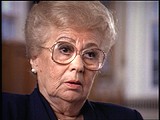
In the 1980s and 1990s, historian Peter Black worked for the US Department of Justice Office of Special Investigations, as part of a team tracking and prosecuting suspected war criminals. Black later served as the Senior Historian at the United States Holocaust Memorial Museum.
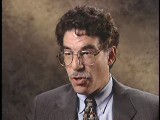
In the 1980s and 1990s, historian Peter Black worked for the US Department of Justice Office of Special Investigations, as part of a team tracking and prosecuting suspected war criminals. Black later served as the Senior Historian at the United States Holocaust Memorial Museum.
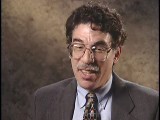
Lutz was one of two children born to religious Jewish parents living in Wrzesnia when it was still part of Germany. After World War I, Wrzesnia became part of Polish territory. Preferring to remain as German citizens, Lutz's family moved to Nuremberg. There, his father opened a kosher butcher shop. In 1926 the Haases relocated to Berlin and reestablished their butcher shop there. 1933-39: Like many of Berlin's Jews, Lutz was assigned by the Gestapo to a work detail in 1937. He laid electrical cable for…
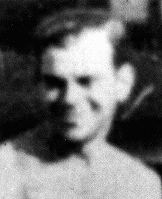
Johan was the eldest of four children born to Dutch parents. His father was a minister in the Seventh-Day Adventist Church. Johan grew up in Collonges, France, where his father served as a pastor. After attending French public schools, Johan graduated from the Seventh-Day Adventist Seminary in Collonges, and went on to study law and business at the universities of Geneva and Paris. 1933-39: After completing his studies in 1935, Johan opened an import/export textile business in Paris. Business prospered…
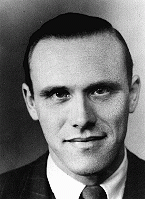
Danuta was born to Roman Catholic parents in the small industrial town of Piotrkow Trybunalski in central Poland. Her father and mother were school teachers. She and her younger sister, Maria, became friends with two Jewish girls, Sabina and Helena Szwarc. Although their houses were more than a mile apart, the girls often played together. 1933-39: Danuta was planning on attending college in September 1939, but on September 1 Germany invaded Poland. Four days later, German soldiers streamed into Danuta's…
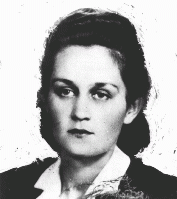
Kazimiera was born to Roman Catholic parents in the town of Mierzen. After graduating from a teacher's college in Staniatki, she married Wincenty Justyna, a secondary school teacher. The couple settled in the small industrial city of Piotrkow Trybunalski and raised three children, Jerzy (a boy), Danuta and Maria. Kazimiera worked as a school teacher. 1933-39: With their combined incomes the Justynas were able to buy a plot of land and build a house. The Germans invaded Poland on September 1, 1939, and…
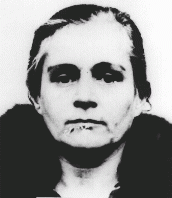
Maria was born to Roman Catholic parents in the industrial town of Piotrkow Trybunalski in central Poland. Her father and mother were school teachers. Maria attended grade school and secondary school in Piotrkow. She and her older sister, Danuta, became friends with two Jewish girls, Sabina and Helena Szwarc. Although their houses were more than a mile apart, the girls often played together. 1933-39: The Germans invaded Poland on September 1, 1939, and occupied Piotrkow four days later. Most schooling for…
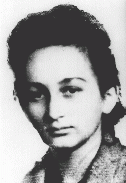
Stefania was born to a Catholic family in a village near Przemysl. They lived on a large farm and cultivated several different crops. While her father worked with the farmhands in the fields, Stefania's mother, a trained midwife, managed the house and cared for her eight children. 1933-39: Stefania's father died in 1938 after an illness. With her mother's approval, she joined her sister in Przemysl in 1939. At 14 she worked in a grocery store owned by the Diamants, a Jewish family. They treated her like…
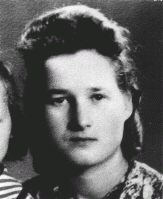
Simone was the oldest of two children born to a Jewish family in the small village of Ringendorf. When she was 3 her family moved to Strasbourg. Her father made his living breeding sheep. Simone and her younger brother were both active in a Jewish scouting organization, Les Eclaireurs Israelites de France (EIF). Simone attended a public secondary school in Strasbourg. 1933-39: In addition to attending secondary school for five days of the week, Simone also went to a Jewish religious school on the other…
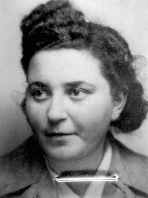
Manya was born in Chmielnik, a small Polish town that had a Jewish community dating back to the 16th century. Her father owned a furniture shop and her mother took care of the home. Manya had two younger brothers, David and Mordechai, and was surrounded by many close relatives. She attended both public and Hebrew schools and had many friends. 1933–39: In 1938 Manya's family moved to Sosnowiec, a larger city located near the German border. There she had her first experience with antisemitism. Signs…
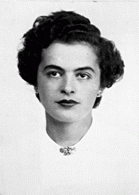
Welek grew up in Dabrowa Gornicza, an industrial town in western Poland. His father, Simcha, was a wholesale meat merchant and his mother, Rozalia, served as president of the local chapter of the Women's International Zionist Organization. Welek's older brother, Szlomo, was a dentist. The Luksenburgs were among the several thousand Jews who lived in Dabrowa Gornicza. 1933–39: Like many other children in the town, Welek attended public school. Because his family was very religious, he did not attend…
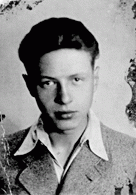
Abraham was born to a Jewish family in Kovno, a city picturesquely situated at the confluence of two rivers. With an opera company, chic stores and lively nightclubs, it was often called "Little Paris." The city had a large Jewish community of 38,000 and was known for its extensive Hebrew school system. Abraham's father was a barber, and his mother was a beautician. 1933-39: When Abraham was a kid his family used to go to his grandparents' house for Sunday dinner. In the winter they would take a…
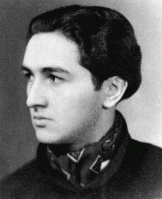
Kalman was the oldest of ten children born to poor, devout Jewish parents in a small village in south central Poland. His father supported the family by buying chickens, eggs and vegetables from the peasants and selling them at the Kolbuszowa market a few miles away. Kalman walked to Kolbuszowa each day to attend public school in the morning and religious school in the afternoon. 1933-39: In 1933 Kalman was accepted to study at a renowned rabbinical institute in Lublin. When there was time, he taught…

Abraham was born to a Jewish family in Krasnik, a town in the Lublin district of Poland. The town had a large Jewish population. Abraham's father was a tailor. When Abraham was 2, his mother died and he was raised by his grandmother. At the age of 7, Abraham started public school. 1933-39: Abraham liked school but found it difficult. The Christian children often yelled at the Jews, "You killed our God." One year, on the day before Christmas break, some kids brought ropes tied to iron weights to school.…
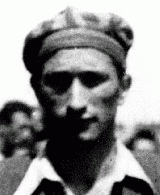
Eugeniusz's parents married in 1922 in the Soviet Union, where his father owned a textile mill. Fearing arrest by the Soviets for being "bourgeois," Eugeniusz's parents fled to Poland, where Eugeniusz was born. 1933-39: Eugeniusz was a secondary school student and was preparing to enter university, either in Poland or at the Hebrew University in Palestine. The German occupation of Lodz in September 1939 interrupted his schooling. One month after the occupation, a German soldier came to his family's door…
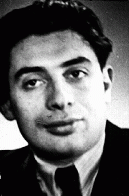
Walter was the oldest of eight children born to Polish-Catholic immigrant parents in a town near Boston, Massachusetts. The family moved back to Poland when Walter was a child, and lived on a family farm near Ostroleka in northern Poland that Walter's mother had inherited. Because his father's American nickname was "Stetson," Walter was mistakenly registered as "Charles Stetson" on his American birth certificate. 1933-39: After Walter completed secondary school, his father sent him to the University of…
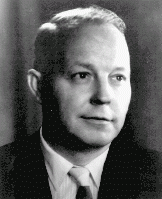
Yitzhak was the second of four children born to religious Jewish parents. The family lived on the Polish-German border in Praszka, a small town where Yitzhak's father worked as a tailor. His work was not steady, and the family struggled to make ends meet. Yitzhak attended Polish public school in the mornings and Hebrew school in the afternoons. 1933-39: At 4 a.m. on September 1, 1939, the Balsams were awakened by an explosion. The Polish army had blown up the bridge over the Prosna River to impede the…
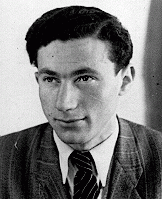
David was the second of four children born to religious Jewish parents in Kozienice, a town in southeastern Poland. His father, Manes, owned a shoe factory that supplied stores throughout the country. His mother, Sarah, took care of the home and children, and helped in the factory. Kozienice had a thriving Jewish community that constituted over half of the town's population. 1933–39: For most of the 1930s, David spent his days going to school, playing sports, and working in his father's shoe factory.…
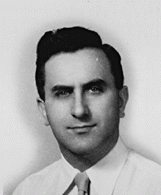
Ruth was born into an orthodox Jewish family in Geilenkirchen, a rural German town near the Dutch border. Her father, Isidor, was a respected cattle dealer in the area and her mother, Sophia, took care of the home. Ruth had two older siblings, Edith and Carl. 1933–39: When the Nazis came to power in Germany, life changed in Geilenkirchen. The townspeople supported the new regime and nobody helped their Jewish neighbors. Excluded from public institutions, Ruth attended a private Catholic school. In 1938,…
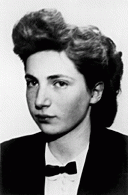
Inge lived with her parents, grandparents, uncle, and younger sister, Gisella, in Lechenich, a small village outside Cologne. The Bergs were an observant Jewish family. Inge's grandfather was the president of the local synagogue association and her uncle was the cantor. Her father, Josef was a respected cattle dealer, who had many business and personal contacts with their Jewish and non-Jewish neighbors. 1933–39: In 1935, two years after the Nazis came to power, Inge was forced to leave public school in…
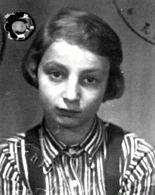
Werner was raised in the rural German town of Herleshausen, where his family owned a farming supply business. His father sold seeds to local farmers and purchased their grain, while his mother ran the office. After several years of public schooling in Herleshausen, Werner began attending a high school in Eisenach, some 12 miles from their home. The Katzensteins were one of about two dozen Jewish families living in the area. 1933–39: When the Nazis came to power in January 1933, the Katzensteins' lives…
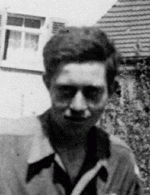
Kato was born to Jewish parents in Smolnik, a small village in eastern Czechoslovakia. While still a young child, she moved with her parents and brother Theodore to Sighet, Romania. There in the Carpathian mountains, her father ran a lumber business that exported wood to Germany and Czechoslovakia. 1933–39: In the 1930s, the popular appeal of antisemitism and fascism increased in Romania. Leaders of the Iron Guard, the militant and violent Romanian fascist party, publicly proclaimed their support for…

Hinda was the eldest of three children in a comfortable middle class Jewish family. Her father owned a textile business in Sosnowiec and her mother attended to the home. Sosnowiec in southwestern Poland had a growing Jewish community of almost 30,000 people. There was a Jewish hospital as well as religious schools. 1933–39: Hinda was just 13 years old when German troops invaded Poland on September 1, 1939. Three days later, they occupied Sosnowiec and terrorized the Jewish community, killing over a…
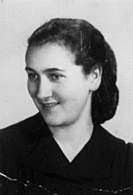
Gisella lived with her parents, grandparents, uncle, and older sister, Inge, in Lechenich, a small village outside of Cologne. The Bergs were an observant Jewish family. Gisella's grandfather was the president of the local synagogue association and her uncle was the cantor. Her father, Josef was a respected cattle dealer, who had many business and personal contacts with their Jewish and non-Jewish neighbors. 1933–39: Gisella was born several months after the Nazis came to power. Her parents feared for…
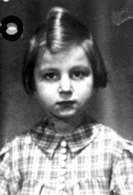
We would like to thank Crown Family Philanthropies, Abe and Ida Cooper Foundation, the Claims Conference, EVZ, and BMF for supporting the ongoing work to create content and resources for the Holocaust Encyclopedia. View the list of donor acknowledgement.